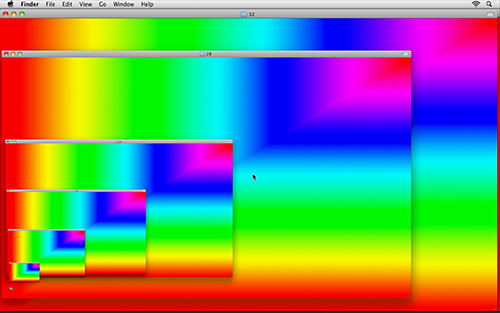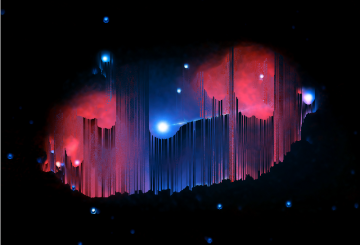From Stella Rosa McDonald…
Remembered for their interpretations of Australia’s vast interior, the artist’s of the Heidelberg school were dedicated to capturing the light of the Australian bush and the individual’s experiences in it. Their palette was earthy and their narratives folkloric and they were some of the first Australian artists to render the landscape as distinct from Europe. Theirs was a new technique made for a new world. This late 19th Century art movement may seem like a strange point of reference for Kaleidorama—a group exhibition of contemporary artists working in mainly digital technologies—but the artists in this exhibition cover familiar territory albeit in an altered digital terrain. The fleeting permutations of light, the residual effects of colour and the individual’s experience in new (digital) landscapes is a thematic shared by the 19th Century school of artists and this distinctly 21st Century exhibition.
Kaleidorama portrays the contemporary artist’s studio as a spectral laboratory and it is pleasing to note that apart from the work of Spanish artist Emilio Gomariz the exhibition is entirely comprised of work by Australian women artists. Do Australian artists maintain a unique understanding of light and use of colour? Taree Mackenzie‘s Black Line Formation and Gomariz’s Opening Folders from his Macintosh Lab series are mesmerizing works that paint using the language of screen technologies. Biljana Jancic’s site specific installation sits in the centre of the gallery, the industrial pipe stretches from the gallery floor to the ceiling as if it were a part of the buildings structural integrity. Painted in blue screen paint — a material that in digital animation allows for the insertion and removal of alternate scenes, objects and effects — suggests the manufactured nature of contemporary images and landscapes and the artist’s sleight of hand. Justine Varga’s works consider personal experiences of time and are preoccupied with the materiality of film. Her impossibly coloured, almost electric, large-format prints are the result of manipulating negatives and in-camera intervention and show the lasting innovation of analogue processes in an exhibition that precisely charts Impressionism in the digital age.
Until July 18
Stills Gallery, Paddington
Pic: Emilio Gomariz, Nyan Folders, 2015, from Macintosh Lab. Screen video capture. Image courtesy of the artist and Stills Gallery, Sydney.


